Results
-
 £85.00
£85.00Sir Roger de Coverley - Frank Bridge
Frank Bridge (1879 - 1941) was one of the leading English composers of his time. In October 1922 he adapted his popular string quartet Sir Roger de Coverley for full symphony orchestra and Sir Henry Wood agreed, at the last minute, to include it in the last night of the Queen's Hall Promenade Concerts at the end of that month.This elaborate and colourful orchestral version has never been widely performed, but has now been brilliantly transcribed by Alastair Wheeler to provide a miniature dance poem for grade 5 level concert band.Bridge's lively treatment of one of England's most famous traditional dance melodies willmake a fitting end to any concert, with the strains of Auld Lang Syne introduced by Bridge as a nod towards Sir Roger de Coverley's traditional function as the final dance of a Christmas Ball, as it was in Old Mr. Fezziwig's party in Dickens' A Christmas Carol.
Estimated dispatch 7-14 working days
-
£65.99
Santa's Magical Midnight Ride - Shaffer
The story tells it all: Santa Claus is on his way! His sleigh is filled with gifts! The weather is clear, perfect for the reindeer to guide him on his Christmas Eve trek. Away we go! Santa knows how to put on a show. He's getting closer, above the roofs, and as he descends, you'll hear the reindeer hoofs. Toward the chimney Santa goes, hoping he fits...oh no... it's a tight squeeze! As he lands with a thump, but Santa's all right; he never fails! After all, he's tough as nails. Recovered from his fall he leaves presents for one and all. Then back to the sleigh, so much to do. Don't worry, he won't forget about you. The stars will always be his guide on "Santa's Magical Midnight Ride!" Scored for maximum sound effects within the percussion section, this will be the hit of any holiday concert!
Estimated dispatch 7-14 working days
-
 £123.95
£123.95Fanfare on Amazing Grace - Adolfus Hailstork
Originally composed for solo organ, Hailstork's fanfare is a 3-minute explosion of joyous sound inspired by the Baroque-era tradition of Chorale Preludes. As in Bach's organ preludes, the familiar hymn's phrases broadly emerge from ornate counterpoint, here in the form of brass fanfares. The result is exhilarating! Also scored by Hailstork for chamber ensemble and for orchestra, FANFARE ON AMAZING GRACE was transcribed for concert band in January 2021 by MGySgt Don Patterson, staff arranger for "The President's Own" United States Military Band, for that ensemble's worldwide broadcast performance at the 2021 Presidential Inauguration.
Estimated dispatch 7-14 working days
-
 £37.37
£37.37Elizabeth Remembered (Wind Band) Debbie Wiseman arr. Andrew Wainwright
Released as a charity single in aid of The Queen's Commonwealth Trust, this sublime work was composed by Debbie Wiseman OBE and performed by the BBC Concert Orchestra in tribute to Queen Elizabeth II after her death in September 2022. This tender and contemplative piece was played many times during the BBC's live coverage of the ceremonies across ten days of national mourning; and the full three-minute piece was played at the end of the Queen's State funeral, following Kirsty Young's emotional final words, and accompanied by a poignant and beautiful montage of images from the events of the day. The piece is now available for wind bands through this arrangement by Andrew Wainwright, with permission kindly granted by Debbie Wiseman. To view a follow-the-score video please visit: www.youtube.com/watch?v=gW6AiNQGKEI Sheet music available from : UK: www.wind-band-music.co.uk USA: www.solidbrassmusic.com Difficulty Level: Medium Easy Instrumentation: Flute Oboe 1 Oboe 2 (Cor Anglais) Clarinet in Bb 1-2 Bassoon 1-2 Alto Saxophone Eb Tenor Saxophone Bb Baritone Saxophone Eb Trumpet in Bb Horn in F Trombone Euphonium Tuba Timpani Harp (optional) Glockenspiel (if no Harp) Suspended Cymbal
In stock: Estimated dispatch 1-3 days
-
 £63.53
£63.53Caprice (Euphonium Solo with Concert Band) Andrew Batterham
VIEW SCORE PDF Caprice was written for Matthew van Emmerik, to showcase his virtuosity in an engaging piece of concert music. The work is in theme and variation form, with the primary material being the theme from the last of Paganini's Ventiquattro Capricci per violino solo, a collection of 24 caprices for solo violin. This theme has been the inspiration for similar works by many composers since it was first published, including Liszt, Brahms, Rachmaninov, Benny Goodman and Andrew Lloyd Webber. In this work, the famous theme is treated to a more contemporary approach. The first variation, Capricious, relies on motor rhythms and jagged dialogues between the soloist and the band. It is couched in an organic scale reminiscent of the Phrygian mode. The second variation, Sad, is in direct contrast, acting as a traditional ballad and allowing the soloist to explore the expressive side of the instrument. The third variation, Energetic, is a micro set of variations in itself, designed to display the soloist's innovative technique and stamina. Each section is more challenging than the last, until the work concludes with a whirlwind dance at breakneck speed. Like all of Batterham's recent work, the musical language of Caprice draws upon classical, jazz, funk and ska elements to create a unique sound where anything can happen, and probably will. This arrangement was made possible through Matt's instigation and generosity. To view a video of Matthew van Emmerik performing the version with brass band please visit www.youtube.com/watch?v=D0hsvux_a5o To view a video of Fletcher Mitchell performing the version with piano please visit www.youtube.com/watch?v=NOZ6KRldDVo Sheet music available from : UK: www.wind-band-music.co.uk USA: www.solidbrassmusic.com Instrumentation: Euphonium Soloist Piccolo Flute 1-2 Oboe Bassoon Clarinet in Eb Clarinet in Bb 1-3 Bass Clarinet in Bb Alto Saxophone 1-2 Tenor Saxophone Baritone Saxophone Trumpet in Bb 1-3 Horn in F 1-4 Trombone 1-2 Bass Trombone Euphonium Tuba String Bass Percussion 1-3
In stock: Estimated dispatch 1-3 days
-
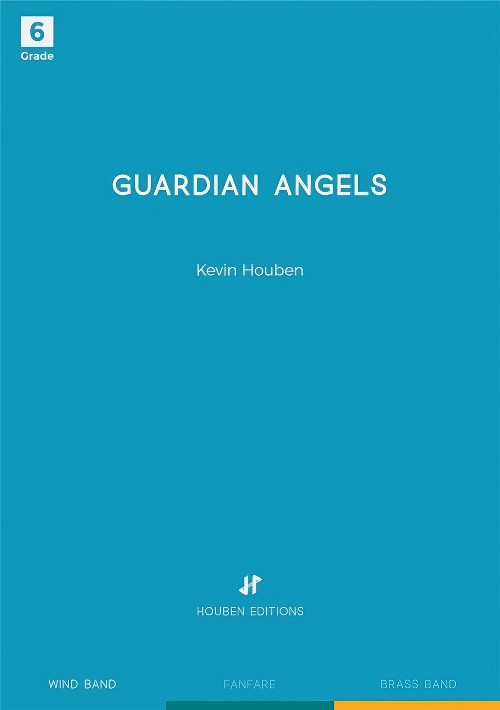 £159.99
£159.99Guardian Angels (Concert Band - Score and Parts) - Houben, Kevin
Guardian Angels gives a musical expression to the legend of Reverend Louis Henri Bahler referring to the use of Psalm 34. North-west Veluwe and in particular Oldebroek (The Netherlands) has a very rich religious tradition which is demonstrated by its monumental churches. They tell the story of a stirring history in which Reverend Bahler played a crucial role. Inspired by his arrival as a pastor in 1870 in the neighbouring Oosterwolde, two big religious communities came into existence with their characteristic churches but this rivalry also resulted in great social unrest. This composition reflects on this striking personality and in particular on the story of the Angel Guard. 'One evening Reverend Bahler has given a sermon in Oldebroek and he walks over the Church path through the pastures to Oosterwolde. On this dark and stormy evening Bahler's opponents are waiting for the pastor in ambush. They want to drown him in a watercourse near the Church path but abandon their plan because Bahler is accompanied by two men. The next day it comes to an encounter between Bahler and his opponents. They repent their, fortunately unexecuted, plan. Bahler firmly believes that on the previous night he walked alone over the Church path, and was not accompanied by two men. It was concluded that it must have been the angels who had protected Bahler.' Psalm 34 is central to this composition and this because of its powerful melody but also because the lyrics of verse 4 of the rhymed version fit in well with the special legend of Reverend Bahler: The Lord's angel gathered round him An invincible heavenly guard, Who tries God's will, around him So he's well guard(ed) A second melodious and harmonic cell is a musical transformation of the name 'Bahler'. This cell is varied in major and minor third chords and sometimes used as the main idea or apotheosis, but also serves as an accompanying cell or as a bridge between other melodic and rhythmic constructions. The composition was made possible by contributions of: Mr Evert van de Poll, owner of the Van Gelder Groep, Het Prins Bernhard Cultuurfonds Gelderland en Het Feteris Oosterbaan Fonds. Duration: 16.30
Estimated dispatch 7-14 working days
-
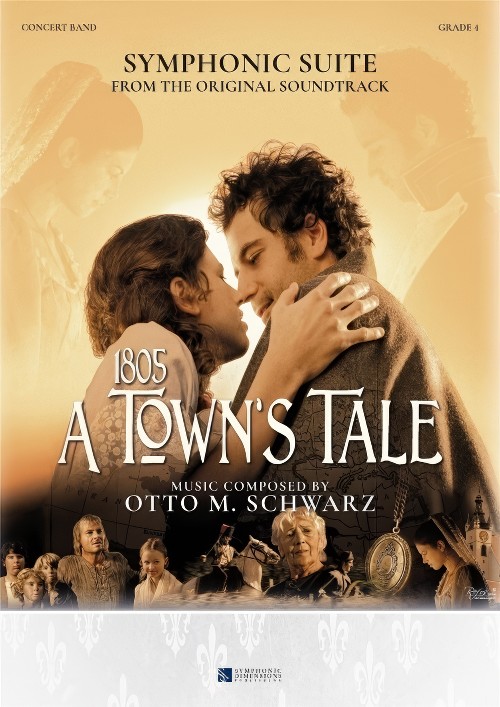 £127.99
£127.991805: A Town's Tale, Symphonic Suite from (Concert Band - Score and Parts) - Schwarz, Otto M.
In 2013 the short film 1805 A Town's Tale was released, produced by Refos Film, with music by Otto M. Schwarz. A fateful autumn day in the year 1805: the morning mists hang heavy over the sprawling field near Drnstein. The captain's tent and some smaller tents are seemingly lifeless in their deep slumber. In dawn's half-light, the fires now only steam and barely glow. A figure sneaks past the main tent. This is Phillipe, a soldier of Napoleon's troops, leaving the camp early to warn Mina, his lover, and the other inhabitants of the town of Krems of the planned raid. The Symphonic Suite is a compilation of various main themes from the soundtrack.Duration: 9.45
Estimated dispatch 7-14 working days
-
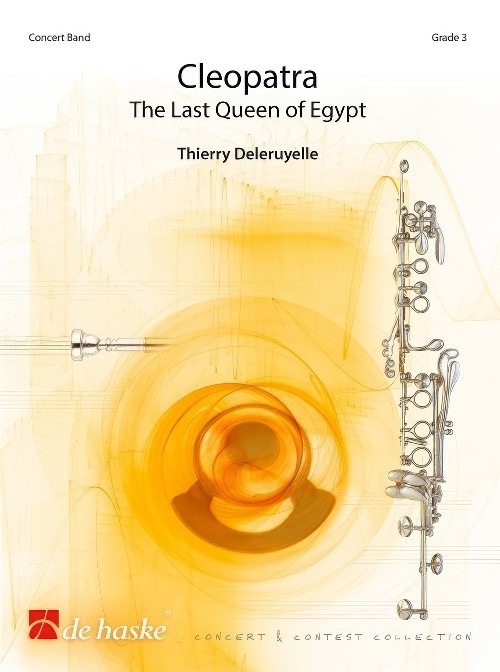 £134.99
£134.99Cleopatra (Concert Band - Score and Parts) - Deleruyelle, Thierry
The Last Queen of Egypt. Queen Cleopatra ruled Egypt for over 20 years. She is one of antiquity's best-known women, in particular because of her relationships with Julius Caesar and, above all, Mark-Anthony, but also because the cause of her death remains a mystery. The work is split into three parts and performed without breaks. The first section begins with a bright introduction representing Mark-Anthony. Dynamic in nature and reminiscent of military music, this characterises the Roman general. But soon after, another theme emerges, softer and more melodic, symbolising Cleopatra's femininity. The two characters then combine on a faster tempo. The middle section of the work depicts the love that Mark-Anthony and Cleopatra feel for each other. This passionate relationship lasted ten years and produced three children. This is expressed by a warm and intense theme, just like the beauty of the Egyptian queen. The third and last section opens in a determined and military mood. Mark-Anthony and Cleopatra were often apart, the Roman general was often away on a campaign. They met up in Alexandria to celebrate their triumph. But, as the targets of the jealousy and ambition of Octavius, Julius Caesar's son, the lovers are trapped and await the inevitable conquest of Egypt by the Romans. When Mark-Anthony heard the false news that Cleopatra had committed suicide, he ended his own life. The Queen of Egypt, for her part, was imprisoned shortly afterwards. The two lovers remain one of History's most famous couples. This piece was commissioned by the Wind Orchestra of the town of Antony, near Paris, directed by Philippe Rossignol, to mark its 90th anniversary. Duration: 10.00
Estimated dispatch 7-14 working days
-
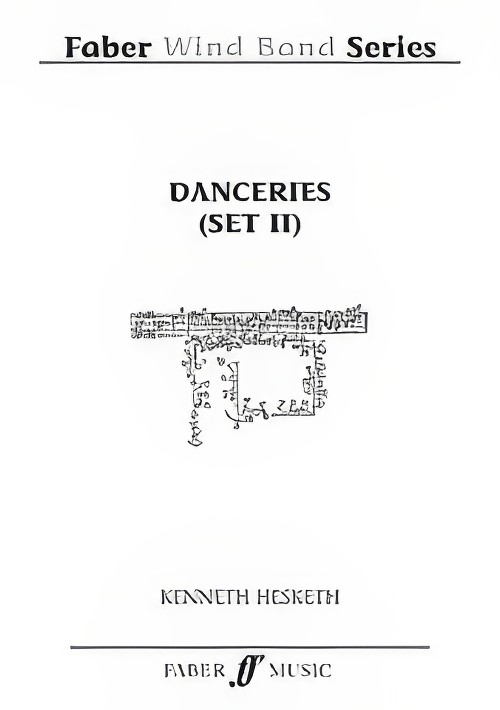 £125.00
£125.00Danceries (Set II) (Concert Band - Score and Partss) - Hesketh, Kenneth - Littlemore, Phillip
Danceries Set II was commissioned by Keith Allen and Birmingham Symphonic Winds, supported by PRS for Music Foundation and the RVW Trust. The world premi?re of this work was given by Birmingham Symphonic Winds, conducted by Keith Allen, at the CBSO Centre, Birmingham in 2011. This second set of Danceries continues the format established in Danceries (Set I), namely in using material taken from Playford's Dancing Master, a collection of folk and popular tunes published in the seventeenth century, to form the basis of an extended dance suite. In this set, the melodies have been more abstracted and project only a distant echo of their original forms, but as before, each movement is self-contained, colourful and direct, with its own distinct mood. The outer movements - Jennie's Bawbee and Peascod's Galliarda - share a use of driving percussion writing with a military air. Tom Tinker's Toye and Heart's Ease (movements two and three) are both settings of original melodies. All movements are more extended than in the first set, with a freer use and approach to the material; melodies now occur in various keys and are supported by a greater variety of harmonic colouring. The result is a richer, even more exhilarating set of dances. Danceries has come of age! Duration: 15.00
Estimated dispatch 7-14 working days
-
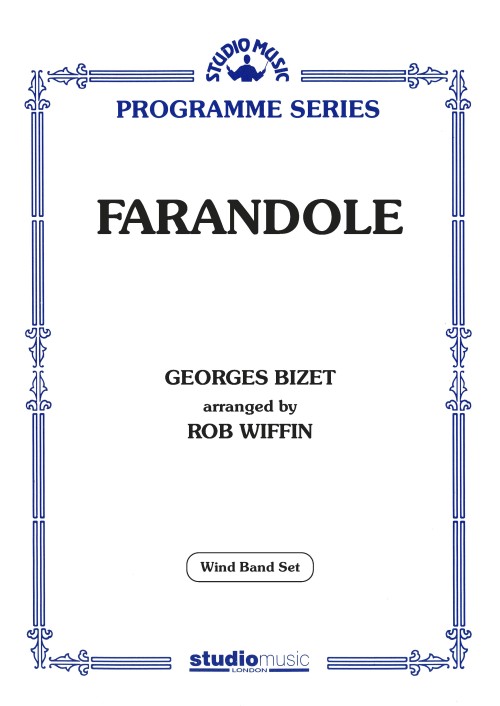 £64.95
£64.95Farandole (Concert Band - Score and Parts) - Bizet, Georges - Wiffin, Rob
In taking a lateral look at Bizet's famous Farandole, I decided to omit the full opening statement of the old Provencal tune Marcho dei Rei (March of the Kings), opting instead to make oblique references to it. The combination of this old Christmas song with another traditional Provencal Melody Danso dei Chivau-Frus (Dance of the Hobbyhorse) originally made by Bizet's friend Ernest Guiraud when he compiled Suite No.2 from Bizet's music to the play L'Arlesienne.The farandole is a traditional Provencal dance in which men and women hold hands in a chain and wind through the streets following a musician playing pipe and tabor. In the case of Danso dei Chivau-Frus, the lead dancer would wear a horse's head made of papier mache or something similar.I have attempted to stay true to the spirit of the Farandole and the contrapuntal devices added by Guirand while adding a few touches of interest and harmonic colour here and there.- Rob Wiffin
Estimated dispatch 7-14 working days
